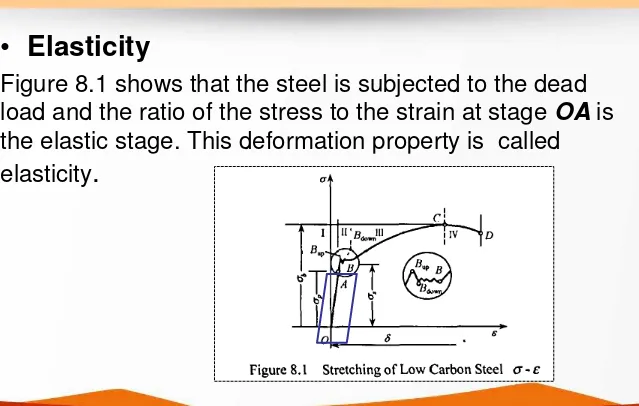Steel Properties
Teknologi Bahan Konstruksi
Steel
Steel consists mostly of iron, with a carbon
content under
2%
and various other
Classifications of Steel
•
By Smelting Processes
Smelting is to oxidize the molten pig iron to reduce its carbon content to the scheduled range and to remove the other impurities to allowable range.
o Bessemer Steel
o Siemens-Martin Steel
Bessemer converter, Kelham Island Museum,
Sheffield, England (2010).
Classifications of Steel
•
By Press-working Modes
In the process of smelting and ingot-casting, there will be uneven structures, foams or other defects happening to the steel, so the steel used in industry should be
processed by press to eliminate the defects. Meanwhile, there is requirement for shapes
Hot-working Steel
Hot working is to heat the steel ingot to a certain temperature
Cold-working Steel
Classifications of Steel
•
By Purposes
The steel can be classified by purposes, such as
construction steel, railway steel, and pressure vessel steel.
The construction steel can be classified by purposes into o For steel structures and
Characteristics of Steel
•
Tensile strength
Yield Strength or Yield Limit
steel starts to lose the ability to resist deformation and generates a great deal of stress in plastic deformation
Fatigue Strength
Characteristics of Steel
•
Elasticity
Figure 8.1 shows that the steel is subjected to the dead load and the ratio of the stress to the strain at stage OA is
Characteristics of Steel
•
Plasticity
The construction steel should have good plasticity. In
Characteristics of Steel
•
Impact Durability
Impact durability refers to the property that the steel resist loads without being damaged.
The impact durability of the steel can be influenced by temperature and time.
•
Rigidity
Standards and Selection of Building
Steel
•
The Steel Used for Steel Structures
o Carbon Structural Steelo Low-alloy High-strength Structural Steel
•
Steel for Concrete Structures
o Hot-rolled Reinforced bar, cold-drawn hot-rolled
reinforced bar, cold-drawn low-carbon
o steel wire, cold-rolled ribbed bar, heat-tempering bar,
Fire Protection of Steel
•
Fire Protection of Steel Structures
Fire Protection of Steel
Fire protection of Steel methods
o Add box coat to the steel columns, and inject water
into the box. In fire, the temperature of the steel
columns rises slowly due to the protection of water.
o Paint fire retardant coatings on the steel structures to
improve their fire-resistant limit.
Corrosion and Prevention of Steel
When the surface of steel contacts with the
surrounding environment under a certain condition,
it will be corroded
The corrosion will lower the fatigue strength
Corrosion and Prevention of Steel
When the surface of steel contacts with the
surrounding environment under a certain condition,
it will be corroded
The corrosion will lower the fatigue strength
Reasons for Corrosion of Steel
•
Electrochemical Corrosion
When steel contacts with electrolyte solution and generates electric current, there will be the
Corrosion Prevention of Steel
•
Protective Film
This method is to isolate the steel from the surrounding media with the protective film to prevent or delay the damage caused by the corrosion of external corrosive media.
For example, paint coatings, enamel or plastic on the surface of steel; or use the metal coating as the
Corrosion Prevention of Steel
•
Electrochemical Protection
Current-free protection is to connect a piece of metal, such as zinc and magnesium, more active than steel to the steel structure.
This method can be used for the places which are
Corrosion Prevention of Steel
•
Alloying
The addition of alloy elements into carbon steel to produce various alloy steel will improve its
Advantages &
Disadvantages
Advantages:
even materials, stable properties, high strength,certain plasticity and toughness, and the properties to bear
impacts and vibration loads, and can be welded, riveted, or screwed
